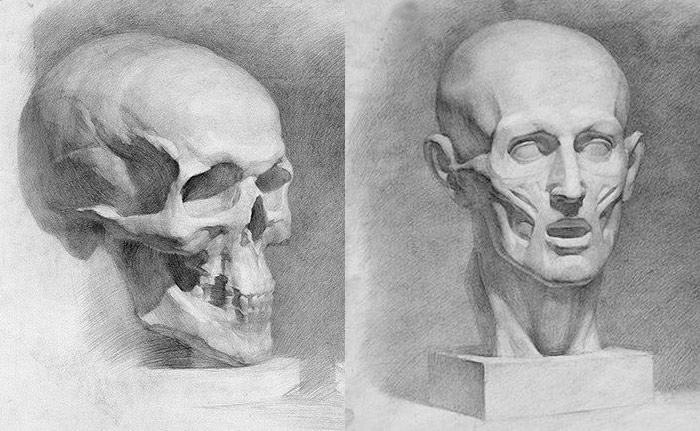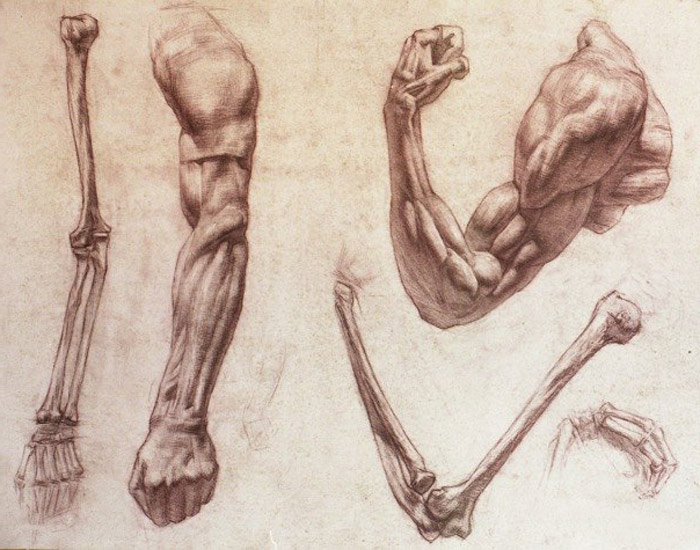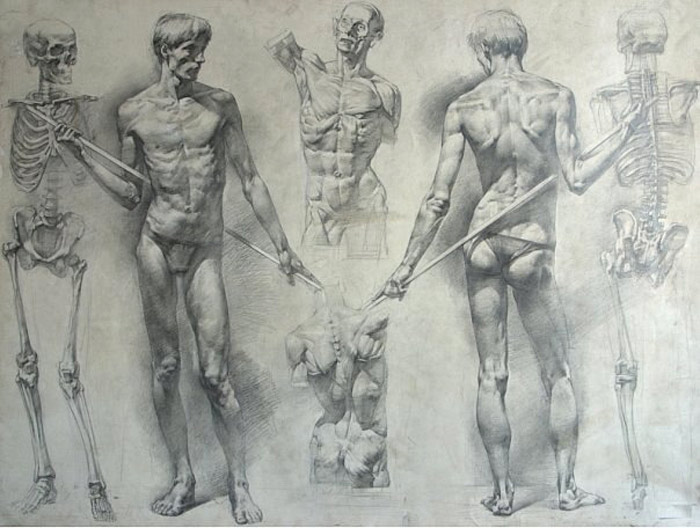Question from Priscilla
I’m going to begin by saying that Drawing Academy is awesome, and I’m really interested in taking the courses. Thank you so much for what you are doing. You guys are some of the best artists I have ever seen :) I’m so happy that I came across this website.
I was reading what Vladimir London said about how to get the most out of a life-drawing classes
//drawingacademy.com/how-to-get-the-most-out-of-a-life-drawing-class
- Since Drawing Academy advocates drawing from life, is drawing from videos that feature live models recorded in real time helpful?
- How many years should a complete beginner in drawing like me take before doing that?
Dear Priscilla,
Many thanks for your feedback and questions.
What is life drawing?
You are asking if drawing models recorded on video is a good way to learn life drawing.
I think we need to clarify what “life” drawing is.
Life drawing is when an artist draws from real life.
In the case of figure drawing, that would be portraying live people or sculptures—three-dimensional figures in a real world.
That is why drawing from a computer screen is not a “life drawing,” even though a video presents live people who move and breathe. The same can be said about drawing from photos. You can check this video to find out why drawing from photos (or videos) is not suitable for learning good drawing skills:
//drawingacademy.com/why-drawing-photos-is-treacherous
When you copy figures from photos or videos, you use a different set of skills than what is actually needed for life drawing. This happens because you don’t see the tangible depth of environment and figures but rather an illusion of a real world that is presented on a flat surface (a photograph or your device’s screen).
Here’s the harsh reality – if a complete beginner “studies” figure and portrait drawing only by copying flat images, such a student might lose the ability to draw from life for good, because re-learning proper skills will be much harder than learning the right way from the beginning.
How long does it take?
Coming to your second question of how many years it might take to acquire strong drawing skills before moving to life drawing, it depends on your current level, your ability to learn, and the actual time you spend practicing. To give you an idea how long it might take for a complete beginner, I will tell you my story.
As a nine-year-old child, I entered the art school that taught drawing the traditional way. It was a five-year school with five days a week, four hours a day of intense art curriculum.
Learning drawing started with simple tasks, like how to sharpen and hold a pencil, drawing lines and simple geometrical figures, theory of perspective, learning constructive drawing principles, how to measure proportions and angles with a pencil, understanding contours, drawing basic three-dimensional forms like a cube, sphere, cylinder, cone, etc., moving to simple still-lives arranged from such objects, drawing organic items like fruits and vegetables, casts of rosettes and stylized leaves, and simple architectural details.

In second year, drawing advanced to more complex still-lives containing both man-made and natural objects, animals, understanding of folds and drawing draperies, drawing more complex architectural objects like column capitals, learning classical orders, drawing furniture, interiors, exteriors, and landscapes.

In third year, the curriculum moved to human anatomy, the proportions of a human body, head and face, drawing of a skull, casts of écorché – hands, arms, feet, torso, and head. This was followed by drawing elements of classical sculptures – lips, nose, eyes, hands, and feet – casts of male and female Greek and Roman busts, advancing to full-figure sculptures in standing and sitting poses.


Drawing still-lives, busts, and sculptures took from 10 to 40 hours per artwork.
Only after all these steps was I ready for life drawing, which began with long-time (up to 20 hour) poses. Gradually, timing was reduced and by the end of year four, I could make meaningful “fast sketches,” 20 to 40 minutes per pose. With time and practice, I was able to do 5- to 10-minute gesture sketches that were proportionate, anatomically correct, and bore likeness to a model.


Contemporary art colleges and life drawing classes reverse the curriculum and throw students straight into fast life gesture drawing. For a beginner, this very quickly ends up with disillusionment and frustration. If this is your case, now you know why.
I hope this gives you enough information to consider taking the necessary steps to learn proper drawing skills.
Best regards,
Vladimir London
Drawing Academy tutor






wow! im very impressed with the answer and even more with how children should learn drawing. i could only wish to have such education!
I am attending life drawing drop-in sessions regularly and the sentence “If this is your case, now you know why” struck me. This is exactly my case. I thought it’s just me having no talent, but, as I understand now, I simply have skill gaps, so asking for good results is a stretch. I’ve spent more than $2,500 on life-drawing sessions in last three years. I have to rethink my strategy now and concentrate on basics. I actually feel robbed by my local art teachers who never taught me how to draw, but gave “well done” comments all the way. So, it’s back to basics for me from now on and I agree with Priscilla that Drawing Academy is awesome!
Rob, I have the same feelings. My fellow art students at the life drawing class have very little understanding of perspective, anatomy and proportions and feel jealous when I do much better life sketches. My explanation that they need to learn basic things about drawing just pisses them off. I learn and practice drawing so hard and still have a long way to go to make anything as good as pictures in this post. But to my co-studetnts I’m just a “lucky bitch” who knows the “secret of drawing.”
Wowee, that’s harsh! And what is the “secret of drawing?” : ) just kidding. To me, doing fast life sketches is like driving with closed eyes. I really need to learn such things as anatomy and proportions…
40 hours per drawing? I don’t think any model would pose for so long
A model would pose for as long as you pay her/him. The good thing about life drawing classes is that the cost is spread among all students. The bad thing is that our teachers do not see value in long time posing
after reading your reply to Priscilla I completely agree you should only draw from life and not from video,
isn’t your course a video course?
Yes, that is why we do not advise art students to copy pictures they see in video lessons.
This video explains how Drawing Academy students can benefit from this video course:
http://drawingacademy.com/how-to-learn-from-drawing-academy-video-lessons
You may also find this article interesting; it fully answers your doubts about learning from videos:
http://drawingacademy.com/drawing-training-vs-drawing-education